Cancer 2020
As a result of WWII, much needed to be done to heal the damage caused and to rebuild society. Many new enterprises were founded in 1948, and as part of this recovery, 31 ‘states and territories’ were also brought into being that year, among them Israel, Myanmar and both North and South Korea. (Wikipedia figures).

The start of a rebuild? A famous photo taken in Times Square by Alfred Eisenstaedt after victory over Japan.
I find this fascinating, as I use the Huber 72-year cycle in my work, and in 2020, these countries, and any organisations which started in 1948, will be 72, and thus start a new cycle sometime this year. A rebirth! According to this cycle, the last 6 years (the Pisces phase), have been ‘gestation’ years. An inward process of looking back over the last 72 years, to come out with renewed energy and direction for a new start in the Aries phase. This Pisces phase should be a time for reflection, and a good thing to do is to revisit the original purpose of the entity and align with the ‘DNA’. The ‘why’ if you like. It’s the same for people – a rebirth at 72 is a time to really get back to your true essence.
Countries
All the countries mentioned above have featured strongly in the news in the past few years. I hope there is some reflection going on, although with the level of consciousness present in leadership, certainly in Israel, Myanmar and North Korea, which are still highly patriarchal and authoritarian, I fear not.
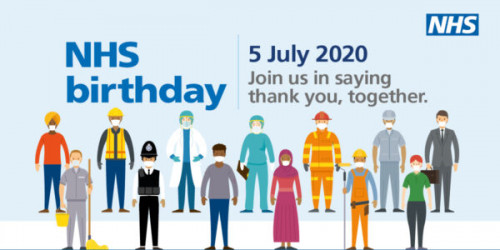
Happy Birthday NHS
However, it is two organisations I wish to discuss this time, as well as a 72nd anniversary. The UK’s favourite National Health Service (NHS) is 72 on July 5th this year. The NHS has constantly been in the news due to the Coronavirus outbreak. However, even before this, it was clear that the NHS had problems, and more money had been promised by the new Tory government to address these issues.
NHS workers have been praised to the hilt as heroes and heroines, for the tireless work they have put in. Once a week the nation ‘clapped for the NHS’, and this will happen again on their birthday. The now 100-year-old Captain Tom raised nearly 33 million pounds for the NHS by walking in his garden. He has been given a knighthood and many other honours. The NHS has rightly been in the spotlight!
Problems glaringly obvious
This attention has also highlighted several issues in health care in the UK
- The fact that NHS workers are often poorly paid, especially when it comes to mental healthcare, which has been heavily underfunded.
- The fact that a high proportion of BAME (Black, Asian and minority-ethnic) workers in the NHS have been badly affected by COVID-19 and/or have died.
- And the fact that a large percentage of NHS staff are BAME employees.
According to one report I read “Today, the NHS is the biggest employer of people from a BAME background in Europe – 20.7% of the NHS workforce, which represent over 200 nationalities. Many are doctors, nurses, allied health professionals, domestic, catering and porters.” It has often been said that the NHS could not function without its BAME staff, and this is undoubtedly true.
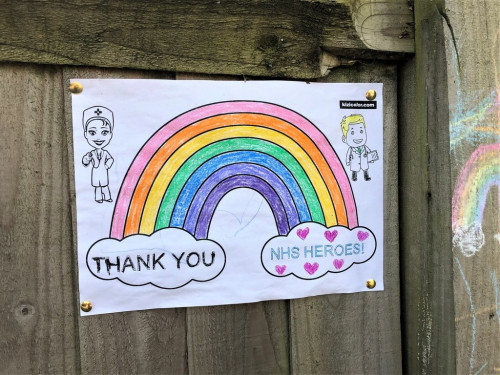
Photo by Bill Nicholls
This matters. Because due to Brexit, the UK are trying to tackle immigration, and many current and potential workers from Europe and beyond, are now unclear as to what their status will be. And now it matters even more, when systemic racism is on the table, because of the Black Lives Matter protests.
Black Lives Matter
Inextricably linked to the inauguration of the NHS was the arrival of what has become known as the Windrush generation. On June 22nd 2020, the UK celebrated the 72nd anniversary of the disembarkation from the Empire Windrush of many African immigrants from the Caribbean. They actually arrived on June 21st but, for some reason, didn’t disembark until the next day.
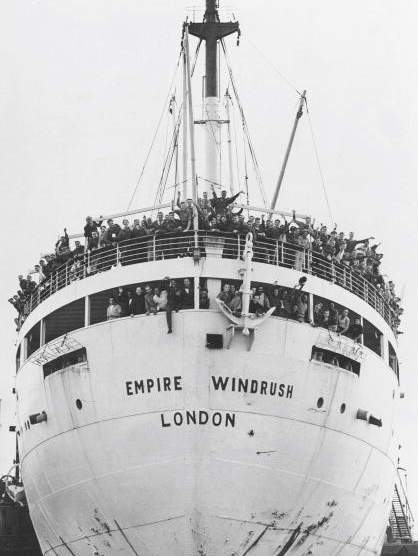
What is less well known is that the Empire Windrush also had many others on board, including, according to one report (see Mead paper link below), 66 Poles (in another report said to be all women), who had “‘wandered from Siberia, via India, Australia, New Zealand and Africa to Mexico’ before finding passage
on the Windrush.”!
Accounts vary but, at the time, headlines announced the arrival of 492 (numbers vary) West Indian immigrants, with no mention of the rest of the passengers and stowaways – around 1027 in total. Of course, it was the fact that these 492 immigrants were black that caused a stir. Most often they were said to be men, which probably made it seem even more scary to the local population. In fact there were also women and families on board.

Passenger log of the Empire Windrush
The start of multi-culturalism?
It is a confusing picture which has gone down in history as the start of a multi-cultural Britain – a fact that is also incorrect. However, it represents the start of Britain’s reaction to immigration from some commonwealth countries. Britain needed to rebuild her economy after the war. Citizens from commonwealth countries were invited to come and were told they were welcome. But it seems that many leaders had forgotten that this included a large number of countries where British subjects were black! West Indians had fought in WWI and WWII for Britain, but from the start, instead of being honoured, their presence was met with open hostility and racial discrimination.
People from this generation have recently been treated appallingly too. This has been highlighted by several moving TV documentaries. Reparation for damages promised by Theresa May’s government is still pending in many cases. Because many of these immigrants and their descendants ended up working for the NHS, which needs immigrants to be able to function, these wrongs have been further highlighted due to COVID-19.
A new start for the NHS
What should happen now is that the NHS gets a whole new reboot. So what is the potential? What was the original purpose and how would their chart describe their ‘DNA’?
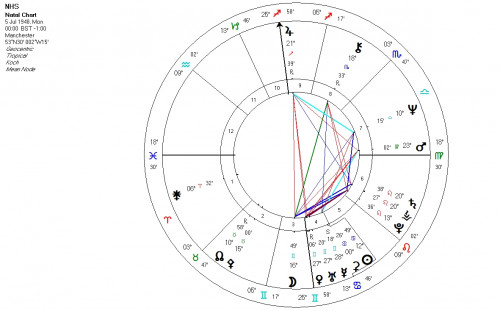
Horoscope of the NHS – a short explanation follows.
Fittingly, the horoscope shows the Sun – the heart of the organisation – in Cancer, not too far from Ceres in the same sign. To me this would indicate a caring management, and a democratic leadership, with a protective family feel at the core. A service for everyone, including Ceres’ favourites – the plebs and all races. It is also very Piscean, as it shows Pisces rising, and the Sun is aspecting Neptune. This, working at its best, would attract compassionate leadership and at its heart it is a tender-hearted organisation. It has a ‘human’ face. The mission also shows a ‘think big’ and generous kind of goal.
Mars in Virgo would highlight attention to detailed medical procedures, and the Gemini planets, when working positively, show a talent for innovation, and a focus on the exchange of ideas. The constitution reflects a lot of the chart elements. Did they have as astrologer?!
So what went wrong?
This all sounds very good and of course this is, in essence, what the NHS is about. It is why people are so positive about many things about the service. But having been on the receiving end of the NHS when I lived in London, and having heard many stories recently about UK hospitals, clearly the negative side of Cancer and Pisces has taken hold. It’s a watery, feeling organisation, however the downside of this can result in chaotic management and staff becoming victims. Many people in the NHS are over-worked and underpaid. The sign of Cancer can sometimes be nationalistic, and Pisces can disappear into emotions and impracticality.
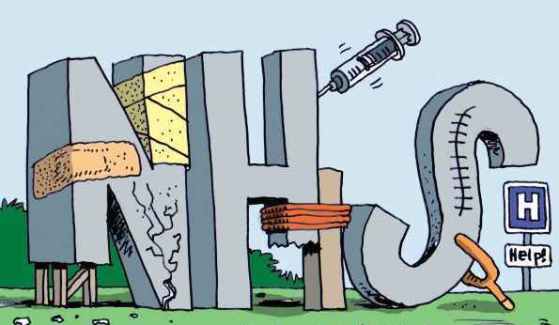
Art by Graham
The staff have the potential to be more practical than management, so my advice would be to give staff more responsibility for problem solving. Back in 2013 there was a program called ‘Can Gerry Robinson fix the NHS?’. I was a big fan of his approach to business consultancy. Among many other things, he too was an advocate of staff having more responsibility. Staff are the do-ers, management are the dreamers!
The management can think up concepts for pioneering and daring changes, however the staff should be involved in decision-making as they are the ones who must, and can, bring dreams down to earth. The NHS would work better when lower levels within the organisation have influence and the authority to take decisions. And of course, they need to be taken care of instead of being taken advantage of!
Back to Windrush
The date used for the arrival of the ship is June 22nd, so this date sets the scene for how these immigrants will fare in Britain. A BBC article quotes: “Historically there is a belief that Britishness is the same as whiteness, and that black and brown people can never truly be British, no matter what the laws say or what is written on their passports. Such beliefs were held, almost universally, by postwar-era politicians.” It was thought at the time that ‘coloured migration’ would lead to a ‘colour problem’. And many hours were spent on ways to limit this migration without destroying commonwealth ties and damaging Britain’s reputation.
What does the day say?
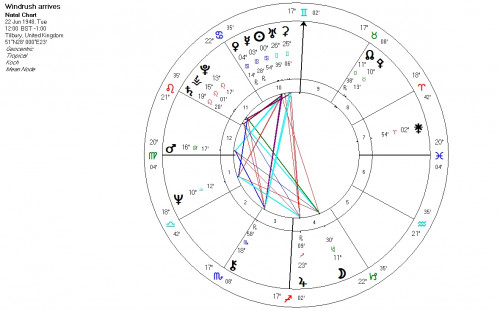
A chart for June 22 1948, the day of the disembarkation from the Empire Windrush – time unknown.
Like a birth, the first moments of anything set the scene for how events will develop. Although we don’t have a time for the start of disembarkation, what is clear in this chart for me, is the Cancer emphasis. This shows the belief that the immigrants felt they were part of the British ‘family’. However, the heart of this important moment – the Sun (government, leaders and purpose) – is near Uranus and Ceres.
When Ceres goes to the dark side, she wants purity – in this case, as in the case of the Norwegian killer Anders Brevik, who has a similar signature, this means ‘white’. And Uranus represents the outsider. These immigrants and their descendants will never really be accepted in Britain without some serious country therapy. I hope this is what is happening now! The NHS and many companies need to embrace immigrants, whatever the colour. If this happens, the potential innovative force and loving nature of this generation could be embraced.

WHO logo ( Reuters)
Another reboot on the cards!
The other organisation, in some ways connected to the NHS, which has a 72nd birthday this year, is the World Health Organisation (WHO). It too has been heavily in focus this year due to the Coronavirus. However, clearly, to put it in the words of Bryan Adams: “Something was wrong up on cloud number 9.” It too was set up after WWII, this time to help in coordinating health issues globally.
I have included a link below to the charter of the WHO, which is a meaty document. It has definitions of health and lofty ideals that are very positive. It was an ambitious project at the time, set up as part of the United Nations, and in principle it is a necessary type of organisation in this global world.
However, in the first item of its function the constitution gives the impression that it has more power than it really has, although in practice it has quite a bit! It states its function as “to act as the directing and co-ordinating authority on international health work”. It does coordinate and share data and fund research and do lots of other good things. But it doesn’t have the power to tell countries what to do – it can only advise. Countries have always fought against the WHO having too much power. This debate is on the table again due to COVID-19.
A new round?
There is a call from Australia (for one) for WHO powers to be changed so that countries can be forced to comply with WHO guidelines. Will this mean a new start? It is the right time, but is this the right direction?
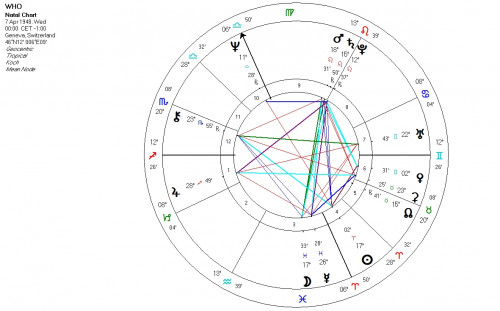
The WHO chart
The development of the WHO came from the merging of earlier bodies set up to handle quarantine requirements related to firstly cholera, and later the plague. The initial ideas were to prevent and control the spread of disease. When 26 countries had signed up to the charter, this was considered to be enough for the WHO to come into being.
In this chart the Sun is in Aries – a defensive and protective sign. It has a ‘keeping the enemy at bay’ feel and it is clear from the chart that controlling viruses and other forms of epidemic spread is in its DNA. As in the NHS chart, it also has Neptune as part of its DNA, suggesting compassion and help on a global level. The Sagittarius ascendant fits the profile of an international body.
However it also has Pluto and Saturn with the Sun implying a leadership that wants to have authority and be in control. This is very difficult when members have their own sovereignty. I wonder if this turns into sneakiness behind the scenes to manipulate outcomes. Authority in the form of expertise is fine and of course that makes it a valuable organisation. And research can be part of that expertise.
But abuse of power and lack of responsibility in the rules that are being suggested (such as lack of valid proof) can cause problems. Transparency is what is needed. The WHO is supposed to be free of influences from countries or its stakeholders, but even the stakeholders don’t believe this.
The last survey available done in 2015 has the following findings (my italics):
- WHO is seen as an essential leader to improve global health outcomes.
- The percentage of external respondents who find WHO either indispensable or important for the work of their organization has risen from 82% to 88% between 2012 and 2015.
- WHO is perceived as the most effective organization at influencing policy for improving people’s health at the global level.
- A majority of stakeholders commended WHO’s leadership of the Ebola outbreak, but confidence in WHO’s ability to manage future public health threats has been challenged.
- WHO’s information is perceived as reliable, accurate and useful, however its timeliness can be improved.
- A majority of respondents commended WHO’s work across its 6 priority areas of responsibilities.
- WHO’s independence is recognized by the majority of people yet it is called into question by 1 in 5 of respondents (my note: this is higher among internal respondents and in 2020 perhaps higher).
- External stakeholders’ perceptions vary depending upon geographical location. Regions are broadly supportive of WHO’s work while opinions differ from one WHO region to another, and these differences vary depending on the topic.
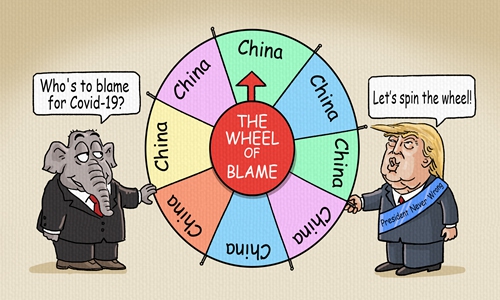
Illustration: Liu Rui/GT
Trump has accused the WHO of having “an alarming lack of independence from China”. He perhaps should look closer to home, because if the US pulls out of the WHO, the biggest funder will be Bill Gates. In a world where money talks, I can’t believe that what Gates wants doesn’t have influence. Where there is so much effort to use pharmaceuticals for world health – one presumes because of the huge profits involved – the WHO has bought into this narrative. My recent post on vaccines discusses the danger of this. One of the reasons Australia is asking for the WHO to have more powers, is so that vaccinations can be made compulsory. This is NOT independent advice for world health.
One of the values listed on the WHO website is ‘respect for diversity’. How about respect for complementary health care? There are a few other statements on their values page that I would question too:
- Our actions and recommendations are independent
- Our decisions are fair, transparent and timely
- We strive to make people feel safe, respected, empowered, fairly treated and duly recognized (perhaps – as long as you are not ‘vaccine hesitant’!)
- We communicate openly with everyone and learn from one another ( hmm – how about the lack of safety testing of combinations of vaccines – to name just one thing off the top of my head)
I don’t think any organisation could live up to the values quoted! So how about making it more like what it actually is? Their true value lies in conducting professional research and communicating it to members. (For you astrologers, Venus in Gemini with links to Pluto and Saturn).

Advice for WHO members from the horoscope
The members of an organisation are shown by the Moon and she is in Pisces – again a danger of being taken advantage of and being victims of management. But they too are shown as having power and wanting honest, independent research and advice. I’m sure it must be obvious to members that they are not getting this. Giving the WHO more power is not in members’ interests.
Of course, much of what the WHO does is very valuable. However, my advice would be for members to stand up and demand true transparency and for funding to be done in a way that can’t give anyone unfair dominance and influence. With the power that materialist science and pharmaceutical companies have, I’m sure that won’t be easy. But to my mind it’s the only solution towards creating better global health.
Faye Blake
Interesting Websites
In case you don’t know about the Windrush scandal.
The Mead paper mentioned above – an interesting read.
Another interesting site on the history of black people in Britain
An article on powers of WHO and the problems involved.
And one on Trump and China
And for the real enthusiasts
For Astrologers
NHS – 5 July 1948, 0:00, Manchester, UK. On this day, Aneurin (Nye) Bevan, the Health Minister, ceremoniously launched the NHS at Park Hospital (now Trafford Hospital) in Davyhulme, Manchester. I’ve used midnight, as from this day it became the NHS.
WHO – 7 April 1948, 0:00, Geneva , Switzerland.
‘Windrush generation’ arrival – 22nd June, 1948, Tilbury Docks, UK. I have used 12:00 as I can’t find a time of disembarkation. The ship actually docked on the 21st of June.
Quote of the month
“The first wealth is health.” Ralph Waldo Emerson
He also said “I hate quotations. Tell me what you know.” 🙂












